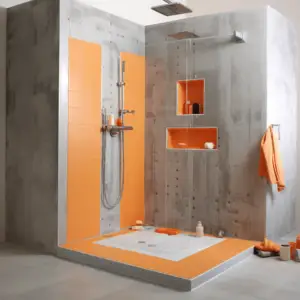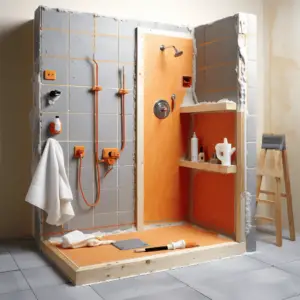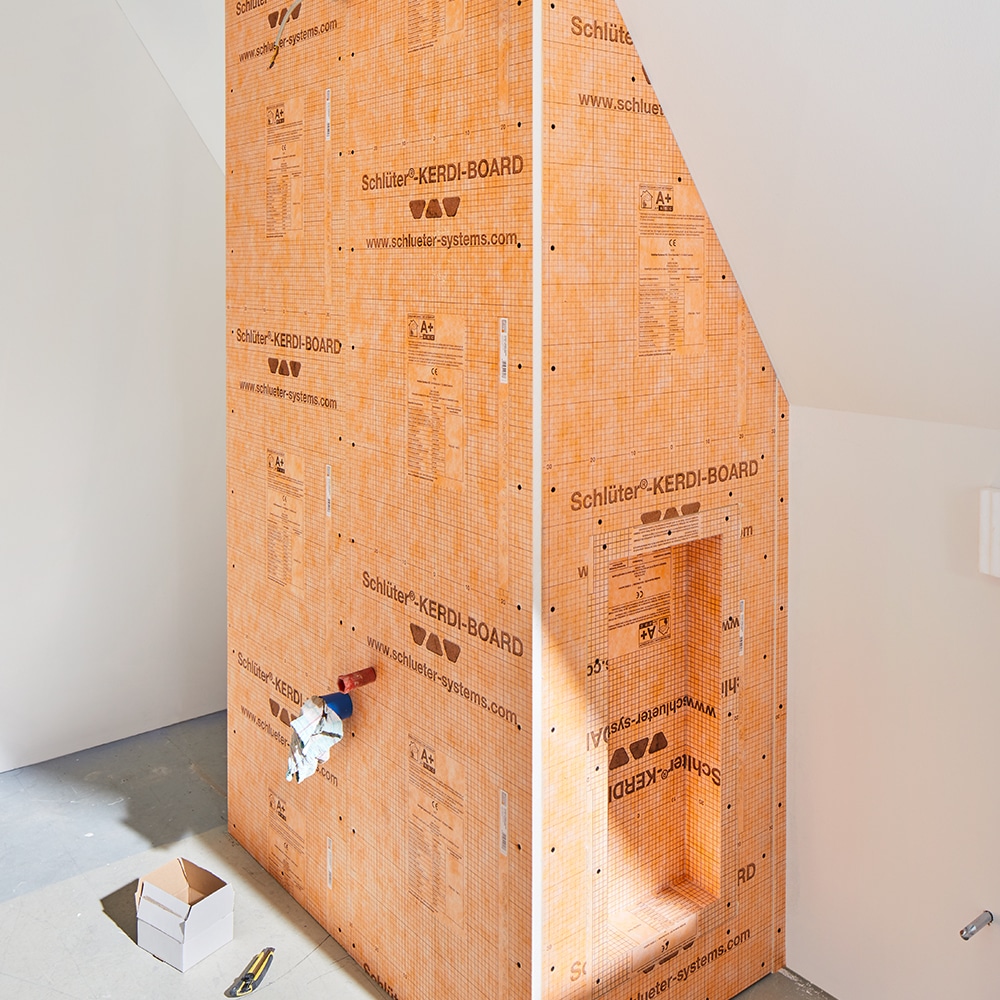Kerdi Board vs Cement Board, Cement board is a popular option for those looking to waterproof their showers and bathtubs. With its watertight design, this product can last for decades without requiring additional maintenance.
The major concern with cement board is that it is typically more expensive than kerdi board and requires a more substantial time investment in its set-up. Let’s explore the difference between each waterproofing product so you can make an informed decision!
Table of Contents
Kerdi Board vs Cement board: What is the Difference?

There are many similarities between the Kerdi board and the cement board. Both products create shower walls, floors, and other bathroom surfaces. They’re also both made of cement, but there are some key differences between the two materials that you should be aware of when choosing which is right for your project.
The biggest difference between the Kerdi board and the cement board is that Kerdi is an engineered product that includes a waterproof membrane attached to a layer of cement board. The waterproof membrane means you don’t have to seal your shower walls or floors after installing them, making it an easy DIY project for most homeowners.
Cement boards don’t include a waterproof membrane built in, so you’ll need to install a layer of plastic sheeting over them before installing tile or any other wet-suited material like grout. This extra step adds time and labor costs, making it difficult for homeowners with limited DIY skills to complete successfully without hiring professionals to help with installation.
How to Use Cement board
Cement board, also known as cementitious backer board or cement board, is a type of building material used for wall and ceiling applications. It consists of a rigid foam core with a cementitious facing on both sides.
The facing may be either gypsum-based or vinyl-based. A cement board is designed to be installed over framing, insulation, and other materials to construct walls and ceilings.
A cement board may be used to create a moisture barrier to protect underlying framing from moisture damage. In this application, it is installed over studs in place of drywall or plaster.
Cement board can be used with either drywall or plaster lath; it may also be used alone without lath if the surface will receive an additional layer of plaster or stucco finish coat material.
When installing cement boards on walls, the boards should be staggered so that joints are not directly next to each other. When installing cement boards on ceilings, they should be directly overlapped at least 6 inches at their edges.
How to Use Kerdi Board
Kerdi board is a waterproof board used in tile and stone showers. It is installed behind the tiles to prevent water from leaking through the joints.
Both boards are very strong and durable, but they have some differences. Here’s how to use Kerdi Board:
- Choose the right project for your budget and space requirements.
- Measure your bathroom walls to get an idea of how much material you’ll need for each installation step.
- Remove any existing tile and clean the surface thoroughly with mineral spirits or paint thinner.
- Apply a layer of thin-set mortar to the surface where you’ll be installing Kerdi board panels; this will allow them to bond well with the substrate.
What are the Advantages of the Kerdi Board over the Cement Board?
The Kerdi Board has several advantages over cement boards, including:
- It’s easier to install than a cement board because it requires no special tools or skills.
- You can use it in almost any room in your home, including bathrooms and kitchens.
- The Kerdi Board is more flexible than cement board and is easier to cut and shape around corners and curves.
- Kerdi board requires no additional finishing work after installation compared with cement board, which requires taping and sealing before applying grout or other materials on top of it.
Kerdi Board vs Cement board: Which One is Better for Shower Walls?
Shower walls are better with kerdi board than cement board. The Kerdi board is waterproofing membrane and fiberglass mesh, whereas the cement board is cement and aggregate. Kerdi board waterproofing is thicker than cement board cement. The substrate is strengthened by fiberglass mesh, so your shower may be erected with less framing timber.
Kerdi board also has a wide range of accessories, including corner pieces and wall panels. These accessories make installing a custom shower system easier, which you can’t do with cement board alone.
Kerdi Board vs Cement board: Which One is Better for Floors?
Kerdi board and cement board waterproof and manage moisture in showers and floors. Both are built of cement and plastic, but their uses and installations differ. Kerdi board, a water-resistant membrane, is placed to your shower or floor like wallpaper before tile installation. Each sheet of Kerdi board contains channels for plumbing pipes, which helps make it easier to connect them to the appropriate fixtures during installation.
The cement board is an underlayment for tile installation on floors or walls. Unlike other types of cement boards, it doesn’t contain any channels or holes through which wiring can be routed, or plumbing pipes can be connected.
The Kerdi board is an amazing product. It is waterproof and vapor-permeable, which means it will keep moisture out of your shower or bathtub, but still allow it to escape into the air through the cement board. Installing a Kerdi board shower is not difficult, but there are some things to keep in mind when you do it.
Kerdi Board vs Cement board: Installation Tips and Tricks

Here are some tips for installing a Kerdi board shower:
- Use anchors for support. The cement board is heavy and can cause cracking and other problems if it isn’t supported properly. Use floor anchors or another type of support system under your cement board.
- Make a level cutting surface with your trowel. You’ll need to cut your cement board during installation, so make sure that you have a smooth surface on which to do it so that you don’t damage the edge of your cement board sheet. This can be done with sandpaper or a file after you’ve cut the piece off, but making sure that your work surface is flat will help prevent chipping or cracking while cutting.
- Cut carefully and slowly using power tools with blades like circular saws or jigsaws. They heat up quickly and can melt or burn through materials like concrete.
Final Word
So, in the end, it comes down to how you’ll use the board. A cement board might be your logical choice if you’re planning to work with harsh chemicals and corrosive liquids. For an affordable, easy-to-install board that bonds well with plastic membranes, choose the Kerdi board. Despite certain important changes in construction and application, these two goods are quite comparable in all other areas, including price.


